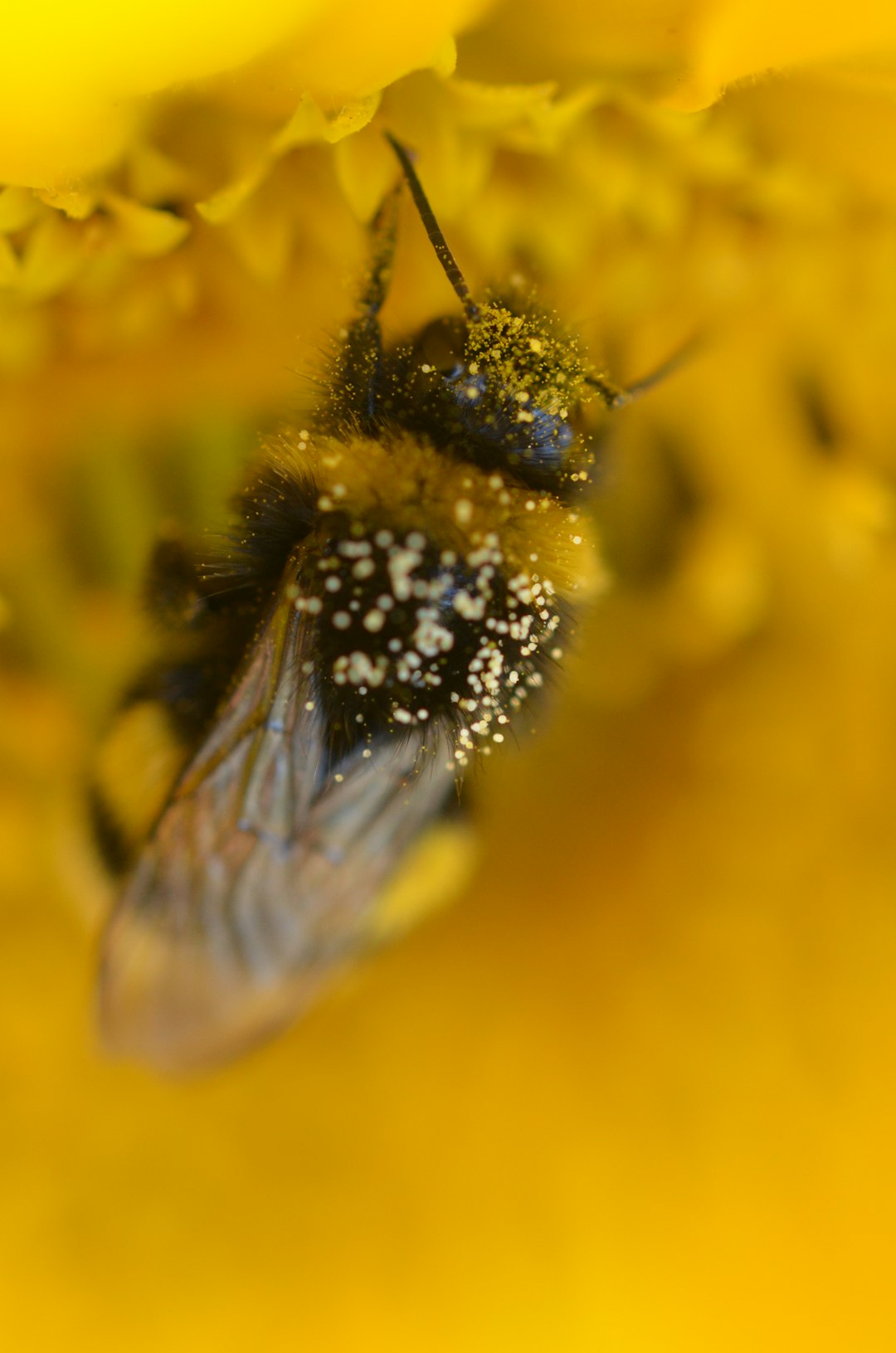Bumblebees nest exclusively in the wild and can often be found in burrows or holes in the ground. When a bumblebee finds an abundant flower at a particular time, she will remember her interaction, the time pollination was completed, and visit the flower at the same place and time the following day. A bumblebee will synchronize her behavior with daily floral rhythms; essentially, measuring her time with flowers. If she’s feeling tired, she might rest inside or around flowers to take a well-deserved nap.
Despite their reputation for being busy, bees forage only when nectar and pollen are at their highest levels. When weather or timing isn't ideal, they remain cozy in the hive, conserving energy that would otherwise be exhausted on nonproductive foraging flights. They stay in their hive when temperatures drop into the fifties, if it might rain, or if there are winds above about 15 miles per hour. On cold winter days, honeybees gather together, taking turns buzzing their wings to create warmth for each other.
Like honey bees, a Queen Bee rules the bumblebee colony while devoted male drones serve her by cleaning and guarding the nest. The bulk of the work is performed by the females who go out to pollinate, gather floral food, and produce wax and honey from their bodies to feed the drones, larvae, and Queen. Of the two species, bumblebees are better pollinators since there are more species of bumblebees, a wider variety in lengths of tongue and thus, the kinds of flowers they are able to feed from. This flexibility makes them adept at cross-pollination and with their furry bodies, they are more resistant to weather conditions such as cold and rain with an oil that makes them waterproof. And since most bumblebees have larger bodies than honeybees, they are able to carry larger loads.
If it’s a beautiful day and flowers are particularly rich with nectar, or if there is a lot of pollen ripe for collection, honeybees may take advantage of the bounty and go back to the hive to recruit. A returning honeybee performs a figure-eight dance to tell workmates where good supplies of pollen can be found. This performance excites unoccupied workers and inspires them to leave the nest and pollinate flowers marked with the scent of the dancing bee. This is a boon for their colony and honey production but it can actually be a disadvantage in terms of pollination. Whereas honeybees will rush off to mine a certain pollen source, bumblebees will stay around, patiently working an extended area until it is fully pollinated.
Bumblebees help pollinate many of our wildflowers, helping them to reproduce and without this pollination, the abundance of many of these plants would decline. As bumblebees only feed on flowers, they need far more plants than equivalent species who are also able to eat leaves or roots. It has been estimated that a stomach full of honey will give a bumblebee about 40 minutes of flying time, so they need to forage regularly to survive. Without the energy in nectar a bumblebee cannot fly, and if she cannot fly to reach flowers to get nectar, she will die. Thus, their population is dwindling due to habitat fragmentation, among other things. They are suffering from a lack of natural, uninterrupted beauty.

You probably know the statistics: one out of every three bites of food we eat is made possible by pollinators such as birds, bats, butterflies, moths, beetles, small mammals, and especially bees. When we embrace wildflowers, and plant in relationship with nature, we increase abundance and restore the beauty of the wild. The buzz of wild bumblebees is the sound of vital land.
Although worker bees only live for about six weeks, they spend their lives performing tasks for survival of their colony, and in turn, their species. After a bountiful spring, summer, and early autumn, an entire bumblebee colony dies except for the Queen. She hibernates underground and rests, often blanketed by autumn leaves. After winter, she emerges to set up her new colony in spring. When she rises, she seeks early forage sources for fuel and to provide food for her first brood of offspring. If just one queen dies, an entire potential colony will be lost. We can help her by leaving our yards, parks and outdoor spaces a little more wild for nesting sites (and ban noisy, harmful leaf blowers please?!) and ensuring early and late blossoms of wildflowers.
A bumblebee’s life may be fleeting, but we all measure time differently. These small creatures are always seeking the sweetest nectar; reminding us to seek out, and find beauty in each day. Imagine if we measured intelligence by how well we knew the location of and behavior of local flowers; navigating the world through landmarks of wild beauty. What an intoxicating world that would be.





What a beautiful post, Vanessa! I read recently about the beauty and importance of "taking care of small worlds" (Asia Suler's work, if memory serves). This post resonates so nicely with that message - the importance of caring for insects that we consider "pests" or "scary." I've recently started transplanting the milkweed that gets mowed (for no good reason) on our country ditches and planting wildflowers in my yard. Little things, but I like to think that our fellow beings appreciate our efforts. Thanks for sharing your beautiful work!
I deeply love sleeping bumblebees tucked into flowers. Thank you for sharing more about their beautiful journeys! I learned so much about furry Bumblebee magic.